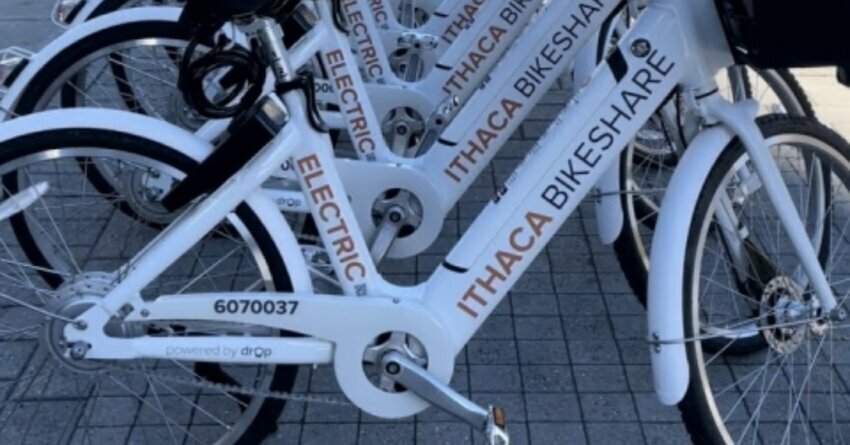 (Credit: Cornell University)
(Credit: Cornell University)Cornell University is taking a multifaceted approach to achieving carbon neutrality by 2035. The University, with a focus on reducing energy consumption, investing in renewable energy, promoting sustainable transportation, and leveraging its research and education programs to advance sustainability that aligns with the University's Quadruple Bottom Line Sustainability Framework.
The latest GHG inventory for FY21 indicates that net emissions stand at 147,124 metric tons of carbon dioxide equivalent (MTCO2e), representing a reduction of over 50% from the 2008 baseline. Despite the operational disruption caused by COVID-19 throughout the year, FY2021 represents a complete year of emissions data.
In FY2021, business air travel was reduced by 97%, and commuting was decreased due to campus density reductions and remote work/learning. Stationary combustion emissions increased by 3% between FY20 and FY21 but reduced by 9% in FY20, resulting in a net reduction of 6% for the current year.
The Energy Management Department oversees the Energy Conservation Initiative (ECI), which is responsible for identifying and assessing energy-saving projects that can significantly impact the Ithaca campus and the University's off-campus contract colleges and real estate holdings. ECI's dedicated team focuses on implementing three main types of upgrades: building automation and controls, heat recovery, and lighting systems.
By the beginning of the 2020s, the ECI initiative had resulted in savings of more than $52 million for the University and prevented over 231,000 MTCO2e from being emitted, which are greenhouse gases that contribute to climate change.
The greenest energy, and the best for reducing climate change impacts, is the energy we never use. Cornell University has seen flat energy use since 2000 as a result of energy conservation efforts, in spite of campus square footage growing by 20% during that same time. - Cornell University
The Quadruple Bottom Line Sustainability Framework at Cornell is a holistic approach to sustainability that considers four interconnected dimensions: environmental, social, economic, and cultural.
Leading the way, Cornell expanded on the traditional Triple Bottom Line for sustainability, which includes People, Prosperity, and Planet, by adding a fourth component, Purpose. This fourth component emphasizes alignment with Cornell's academic, research, and land-grant mission.
In addition, the University has benefited from lower grid electric emission factors as New York State expands its renewable energy sources. Cornell has also increased its use of renewable energy by implementing solar farms and on-campus solar projects, which provide clean power to the campus.